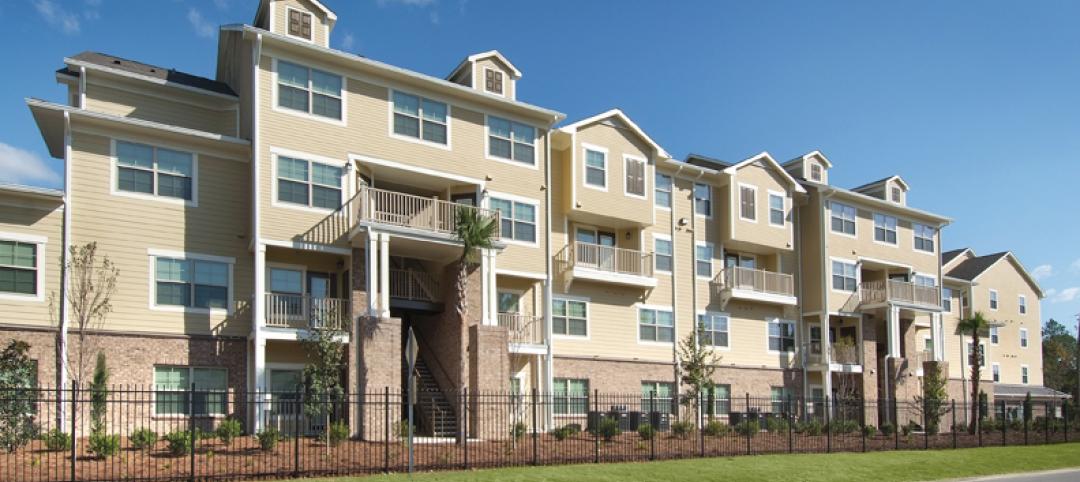At the 2015 Annual Business Meeting of the National Council of Architectural Registration Boards (NCARB), Member Boards agreed on Saturday to discontinue the current Broadly Experienced Foreign Architect (BEFA) Program in favor of a simplified alternative for receiving an NCARB Certificate.
The change, effective July 1, 2016, will optimize the process for foreign architects who are licensed but do not currently meet the requirements for the NCARB Certificate. This credential facilitates licensure among jurisdictions and signifies that an architect has met national standards for licensure established by registration boards.
“We wanted to remove some of the unnecessary financial and administrative impediments for this group by refocusing on the nationally accepted standards for licensure." —Dale McKinney, NCARB President
The new alternative for foreign licensees will replace the current BEFA Program’s requirements, eliminating the committee dossier review and the need to document seven years of credentialed practice in a foreign country. Instead, foreign architects will be required to document completion of the Intern Development Program (IDP) experience requirements and successfully complete the Architect Registration Examination (ARE) to obtain NCARB certification.
“NCARB Certification provides an important career advantage, opening up future job opportunities throughout the U.S. and providing free online continuing education,” said NCARB President Dale McKinney, FAIA, NCARB. “We wanted to remove some of the unnecessary financial and administrative impediments for this group by refocusing on the nationally accepted standards for licensure.
“By imposing the same experience and examination criteria on foreign architects as we do in U.S. architect candidates for certification, we address knowledge of U.S. codes and facility with English as the primary U.S. language,” McKinney added. “The new alternative will be more automated, increasing objectivity and helping reduce fees associated with the dossier and interview requirements.”
In other Annual Business Meeting action, a new alternative to the Broadly Experienced Architect (BEA) program fell one vote shy of getting the 28 votes needed by the Member Boards to discontinue the BEA in favor of a more simplified alternative for architects seeking an NCARB Certificate when they do not have a degree from a program accredited by the National Architectural Accrediting Board (NAAB).
The new requirements for the education alternative for certification would have required five years of post-licensure practice for all licensees without accredited education. It would also have required twice the IDP requirements for work experience for architects with a pre-professional architectural degree, and five times the IDP requirements for those with anything less than a pre-professional architectural degree.
“The split in our membership shows the proposal needs more work,” said NCARB CEO Michael Armstrong. “Our board will apply feedback from the membership toward a remodeled alternative and come back next year with a proposal that will try to capture the blend of rigor, inclusion and ease of use that is acceptable to a majority of our members.”
Related Stories
| Nov 12, 2012
AISC launches 'Night School' online educational program
The program's weekly webinar sessions offer structural engineers a great opportunity to enhance their professional development online while accommodating their schedules.
| Nov 11, 2012
Under40 Leadership Summit draws 71 young leaders to Chicago
More than 70 young—that is, under age 40—architects, engineers, and construction professionals descended on Chicago in early October with one thought in mind: to learn how to “create with clarity.”
| Nov 11, 2012
AIA: Building Envelope
Preventing and treating failure in glazed curtain wall systems. Earn 1.0 AIA/CES learning units by studying this article and successfully completing the online exam.
| Nov 11, 2012
Greenbuild 2012 Report: Hospitality
Hotel boom signals good news for greener lodging facilities
| Nov 11, 2012
Greenbuild 2012 Report: Government & Military
Public sector remains a bastion of sustainability
| Nov 11, 2012
Greenbuild 2012 Report: Healthcare
Green medical facilities extend beyond hospital walls
| Nov 11, 2012
Greenbuild 2012 Report: Multifamily
Sustainably designed apartments are apples of developers’ eyes
| Nov 11, 2012
Greenbuild 2012 Report: Higher Education
More and more colleges and universities see sustainainably designed buildings as a given
| Nov 11, 2012
Greenbuild 2012 Report: K-12
High-performance schools put ‘sustainability’ in the lesson plan
















